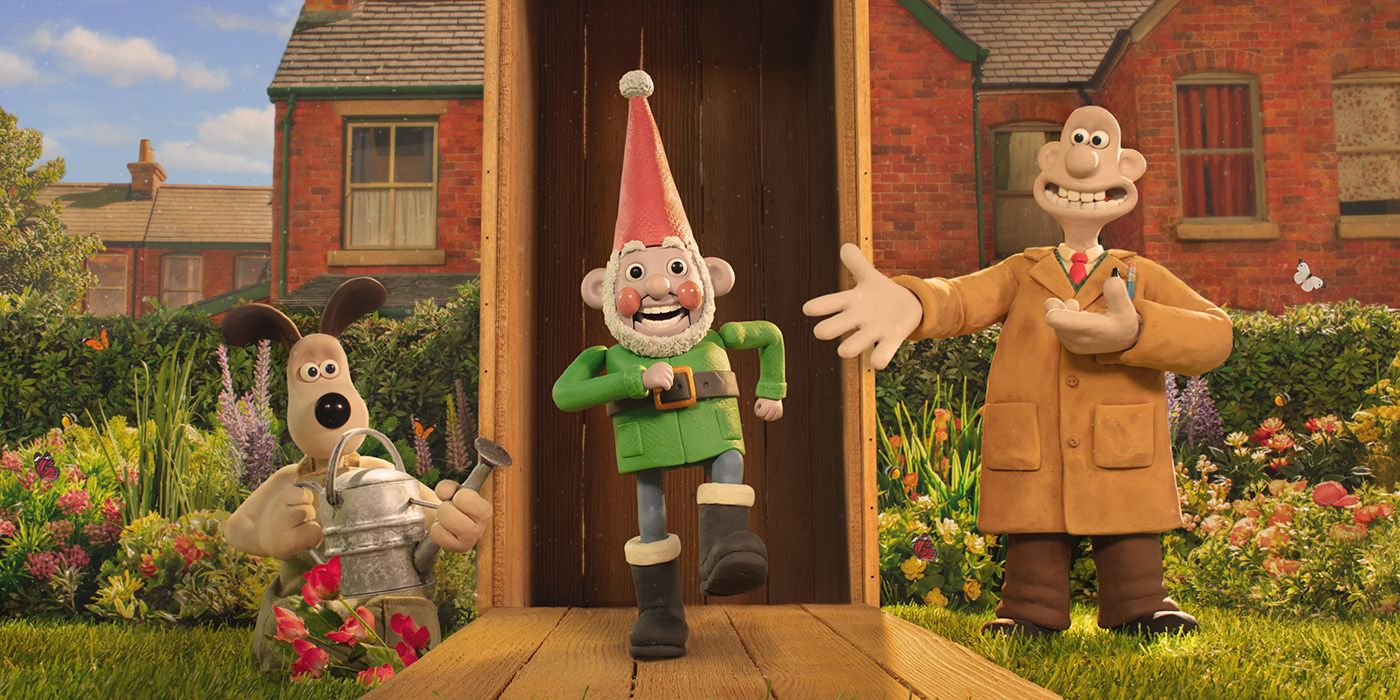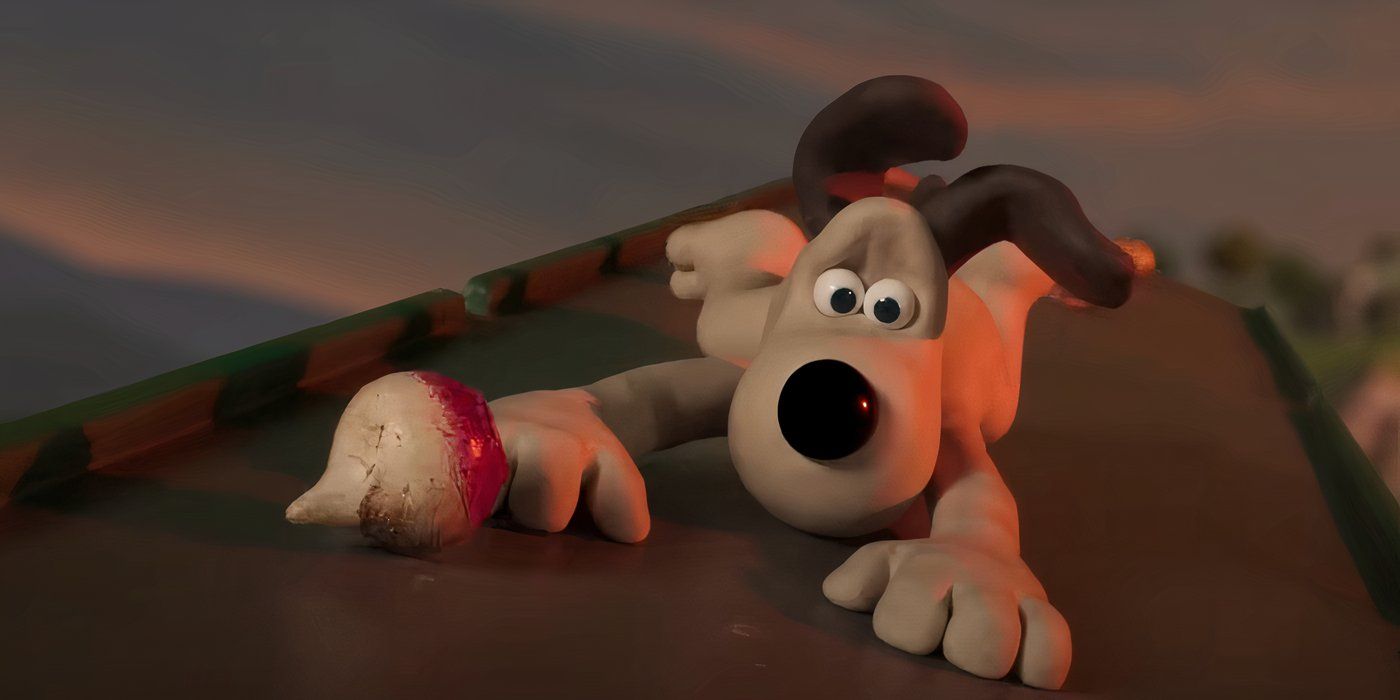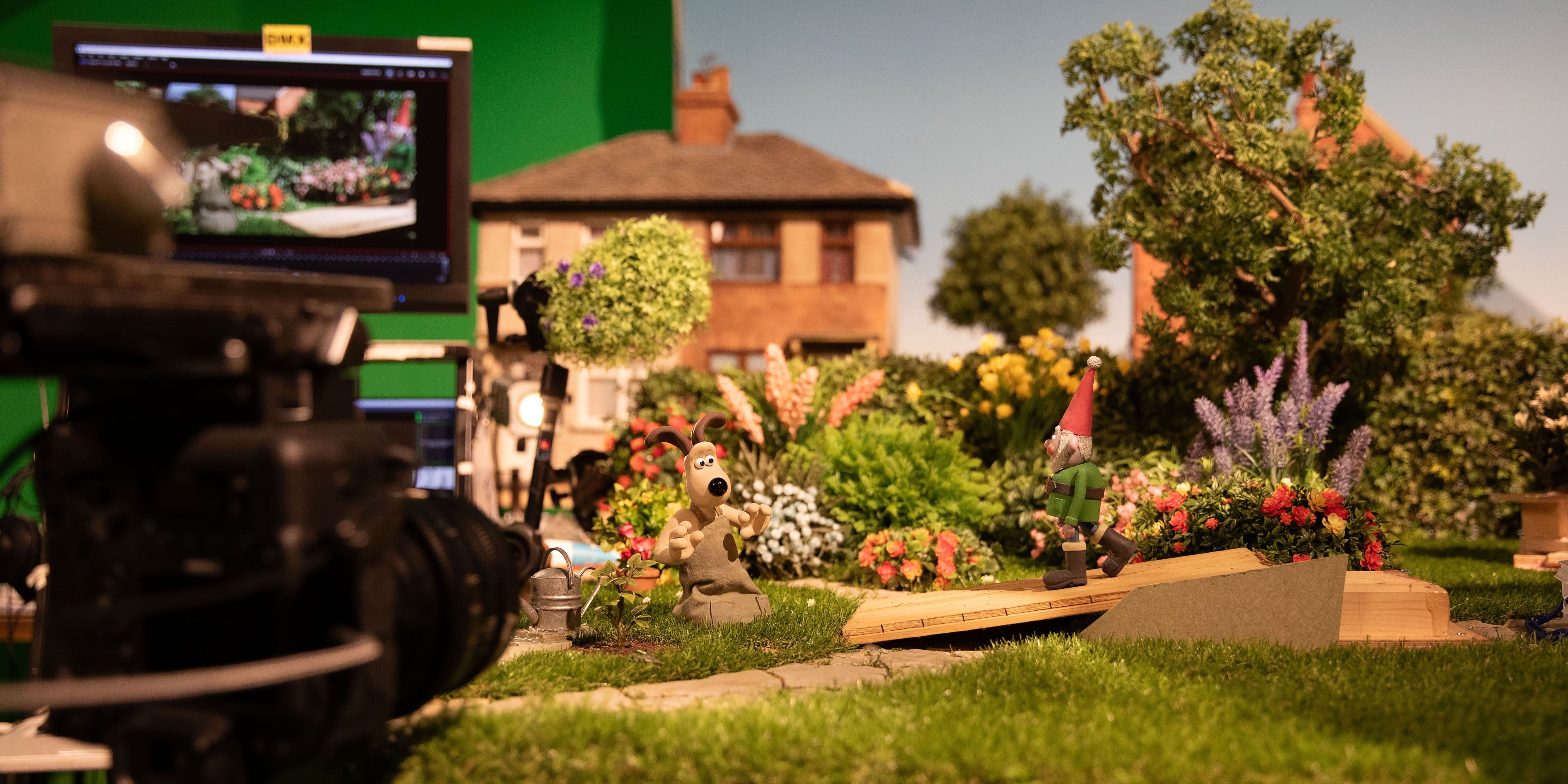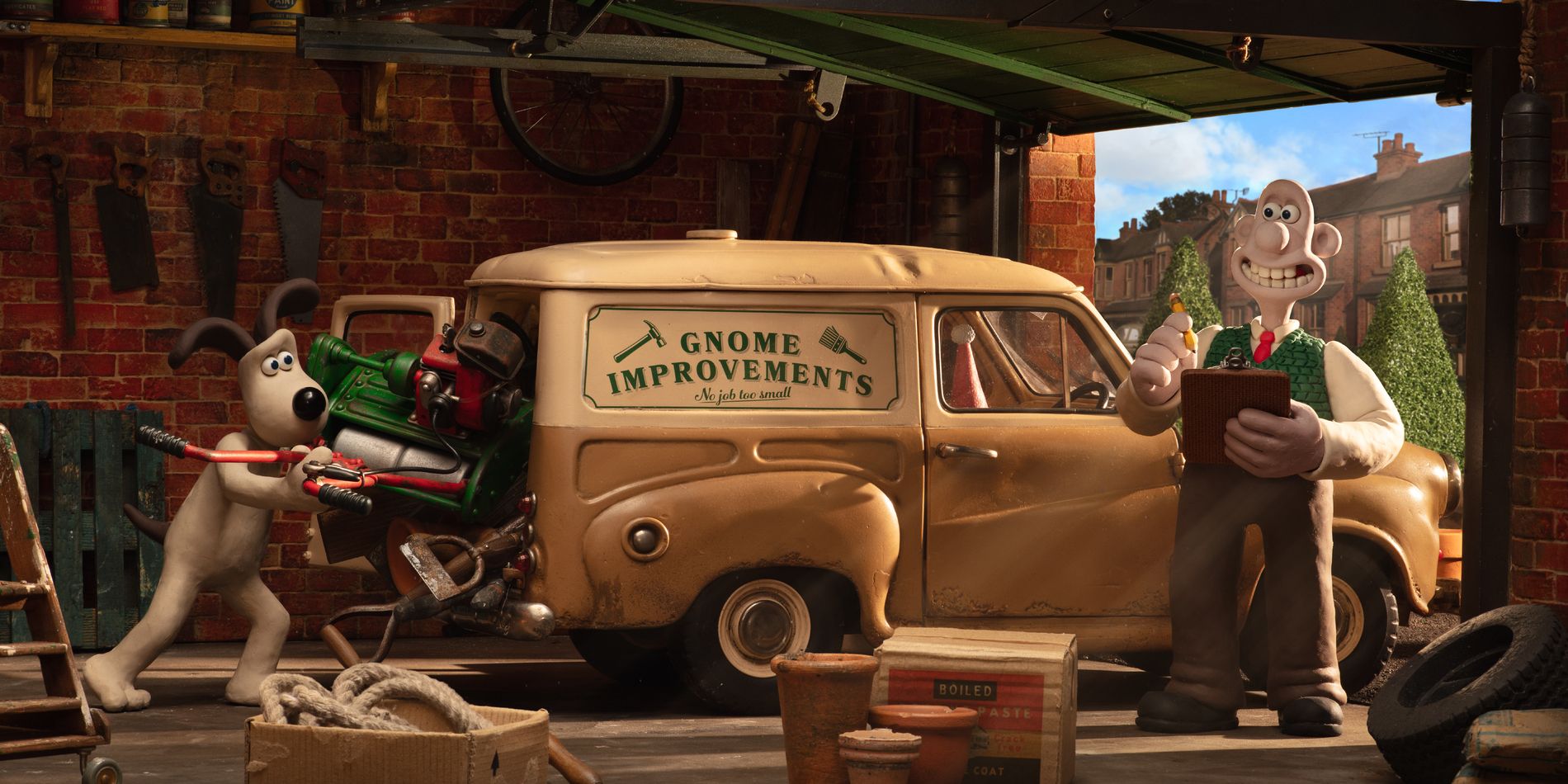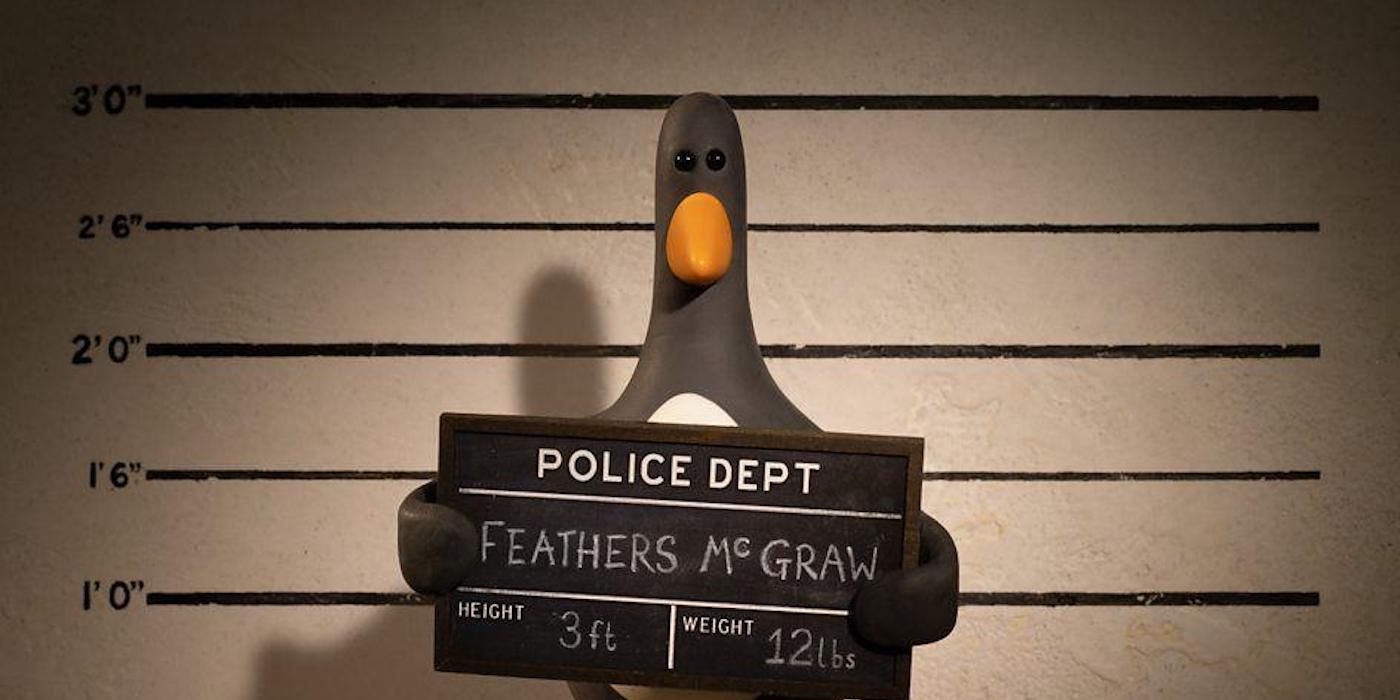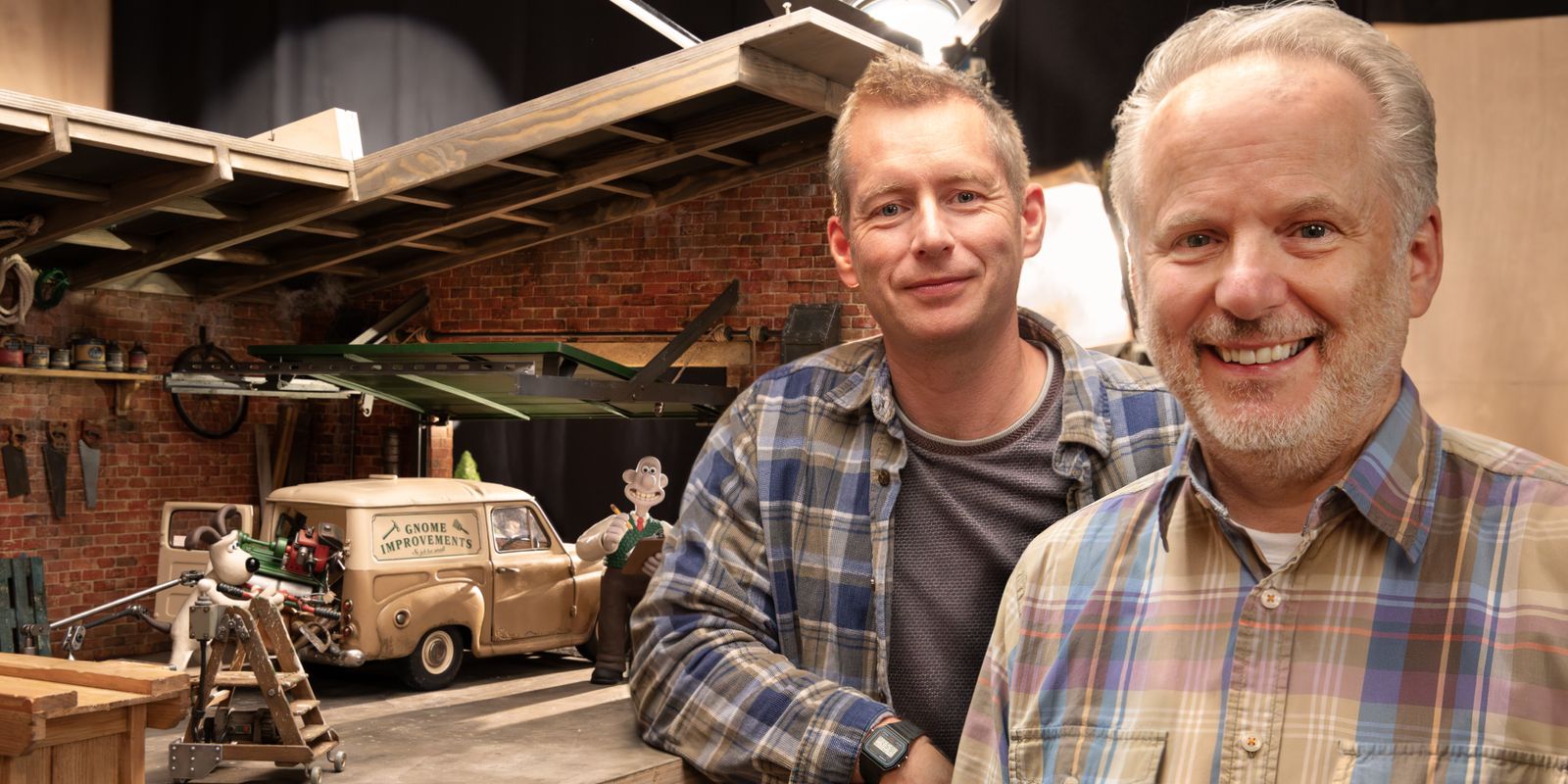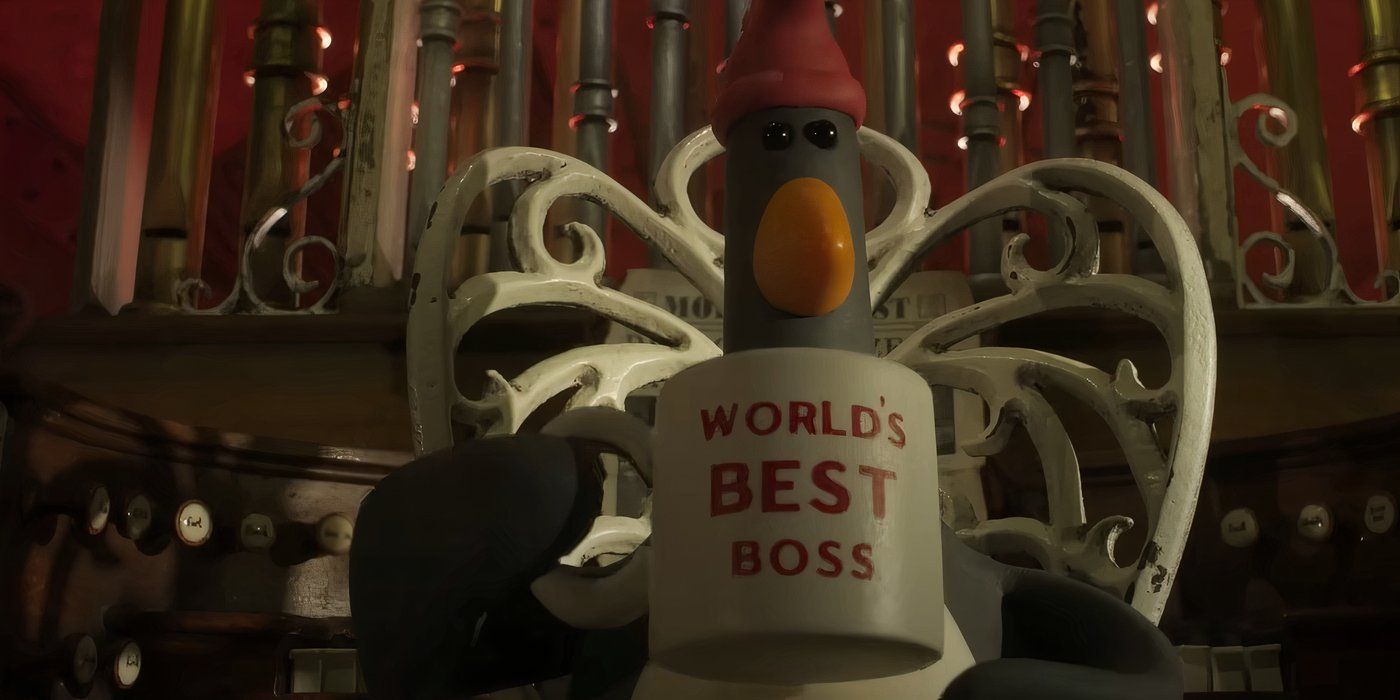[ad_1]
Aardman Animations don’t just fly the flag for animation in the UK, they proudly boast the most recognizable stop-motion work in the world. Hailing from the city of Bristol, England, Aardman is the team behind some of the world’s most famous stop-motion creations, from Flushed Away to Chicken Run, holding both the first and second-placed films in the list of highest-grossing stop-motion movies of all time worldwide. However, no matter how many pampered rats or scheming chickens they may throw the audience’s way, Aardman will always be synonymous with a humble, cheese-loving inventor and his canine companion.
Wallace and Gromit are the timeless faces of British animation, with their legacy dating back to the 1989 Oscar-nominated short, A Grand Day Out. Managing to transcend generations and eras, Wallace and Gromit are beloved by all who even merely nibble at their cheese and crackers, with 52 years of Aardman owing much of its success to this cracking duo. There truly is something particularly magic about this iconic pair, and I was lucky enough to experience it firsthand, as I visited the set of Aardman’s latest wacky adventure in Wallace and Gromit: Vengeance Most Fowl.
What is ‘Wallace and Gromit: Vengeance Most Fowl’ About?
Releasing in time for Christmas on the BBC in the UK and on January 3, 2025, on Netflix across the world, Wallace and Gromit: Vengeance Most Fowl sees the return of several iconic faces and some fresh additions for good measure. Back are the titular duo, although the legendary Peter Sallis‘ passing in 2017 sees Ben Whitehead voice the role of Wallace for the first time in a feature-length capacity. Comedian Peter Kay reprises his role as Albert Mackintosh, something co-director Nick Park admitted during the set visit required “a letter saying how we’d really love him to do it.” Mack has now been promoted to the role of Chief Inspector and is joined by a budding young protégé in Lauren Patel‘s PC Mukherjee.
Rounding out the cast are a pair of beloved British comics, with Diane Morgan voicing the pun-tastic Onya Doorstep and Reece Shearsmith offering the voice of Norbot, Wallace’s latest invention. Of course, two other non-voiced roles are returning for Vengeance Most Fowl, with Gromit as ever back to his cunning best and the long-awaited return of one of cinema’s greatest villains, Feathers McGraw.
For 35 years, Wallace has been pushing the boundaries of household inventions and turning everyday annoyances into the target of his wacky genius. However, Wallace and Gromit: Vengeance Most Fowl sees the passionate problem-solver perhaps finally step over the line, showcasing a life overrun by gadgets. An official synopsis for the new movie reads:
“Gromit’s concern that Wallace is becoming too dependent on his inventions proves justified when Wallace invents a ‘smart gnome’ that seems to develop an evil mind of its own. When it emerges that a vengeful figure from the past might be masterminding things, it falls to Gromit to battle sinister forces and save his master… or Wallace may never be able to invent again!”
‘Vengeance Most Fowl’ Required the Full Attention of the Whole of Aardman
Our visit began with a warm Wallace-like welcome, as the friendly staff of Aardman offered us tea and coffee and we took our seats for a chat with the director of marketing Lucy Wendover, and producer Richard Beek, more fondly known around the studio as “Beeky.” Wendover mentioned, “there was a slight overlap” as Wallace and Gromit moved in following the recent Chicken Run sequel; there’s only enough person-power at Aardman to dedicate to one project, especially the size of Vengeance Most Fowl. Such is the size of this project, at peak times, an impressive 30 animators would work at once — a benefit of having multiple versions of your lead character — with each animator producing 4.2 seconds of animation each week. This leaves the most productive weeks at Aardman only producing 127 seconds of animation, with one scene in particular, a phone call with PC Mukherjee, taking an enormous five weeks to craft.
This first chat was our chance to get a taste of the story, with storyboards and even a clip or two promising that the comforting chaos Wallace and Gromit is known for will be back in full effect. At the time we visited — July 24, 2024 — Vengeance Most Fowl was nearly at the end of production after roughly 15 months, with most of the animators putting in their final touches before signing off on a dream-come-true project. What was clearly crucial to this first conversation was the legacy Wallace and Gromit has produced, with the upcoming film dedicating itself to keeping alive the same sense of wonder through stop-motion those original productions created.
Molding Each Puppet is an Intense Labor of Love
Keeping a visual and tonal consistency is harder than it sounds as time and technology move on, something that became particularly apparent thanks to our next chat with puppet maker Frank Harper, who has been working at Aardman in this role for ten years. Making puppets sounds like enormous fun — something we were lucky enough to even try ourselves at the end of our visit — but there would simply be no puppets to craft without the original drawings, which are given to the puppet makers by the directors or storyboard artists. This then allows the puppet makers to flesh out 3D models of the characters, something we witnessed firsthand as we held a T-posing Wallace.
It’s important to mold all the puppets in this pose originally, as it allows for each to be broken down into separate parts which will be individually molded and turned into a “finished puppet over a skeleton.” Do not be alarmed, said “skeleton” is simply a steel ball and socket armatures. Each armature is designed in-house, with the crafting kept local with someone also based in Bristol hired to make each bespoke model.
Aardman recently became the center of a media frenzy when it was reported that they had run out of clay. Harper was quick to dispel those rumors, although followed up with news that may shock some even more, as he confirmed that each of the world’s most famous stop-motion puppets is not actually made from plasticine and are instead “silicone made to look like plasticine.” In fact, to keep the spirit and style alive and well, puppeteers will deliberately mold in their own thumbprints to try and give the models an authentic look that will fool the average viewer away from the plasticine scent. However, fear not, as plasticine is still used in some elements of this production, mainly in the mouths and faces of the puppets. Each puppet has a set of “12 to 14 different mouth shapes,” helping to intricately bring to life the entire spectrum of language. These are kept as plasticine to allow for malleability, with the “Aardman brow,” in particular, a key element to the animation of Gromit; as a non-talking character, Gromit’s eyebrows are his main source of emoting.
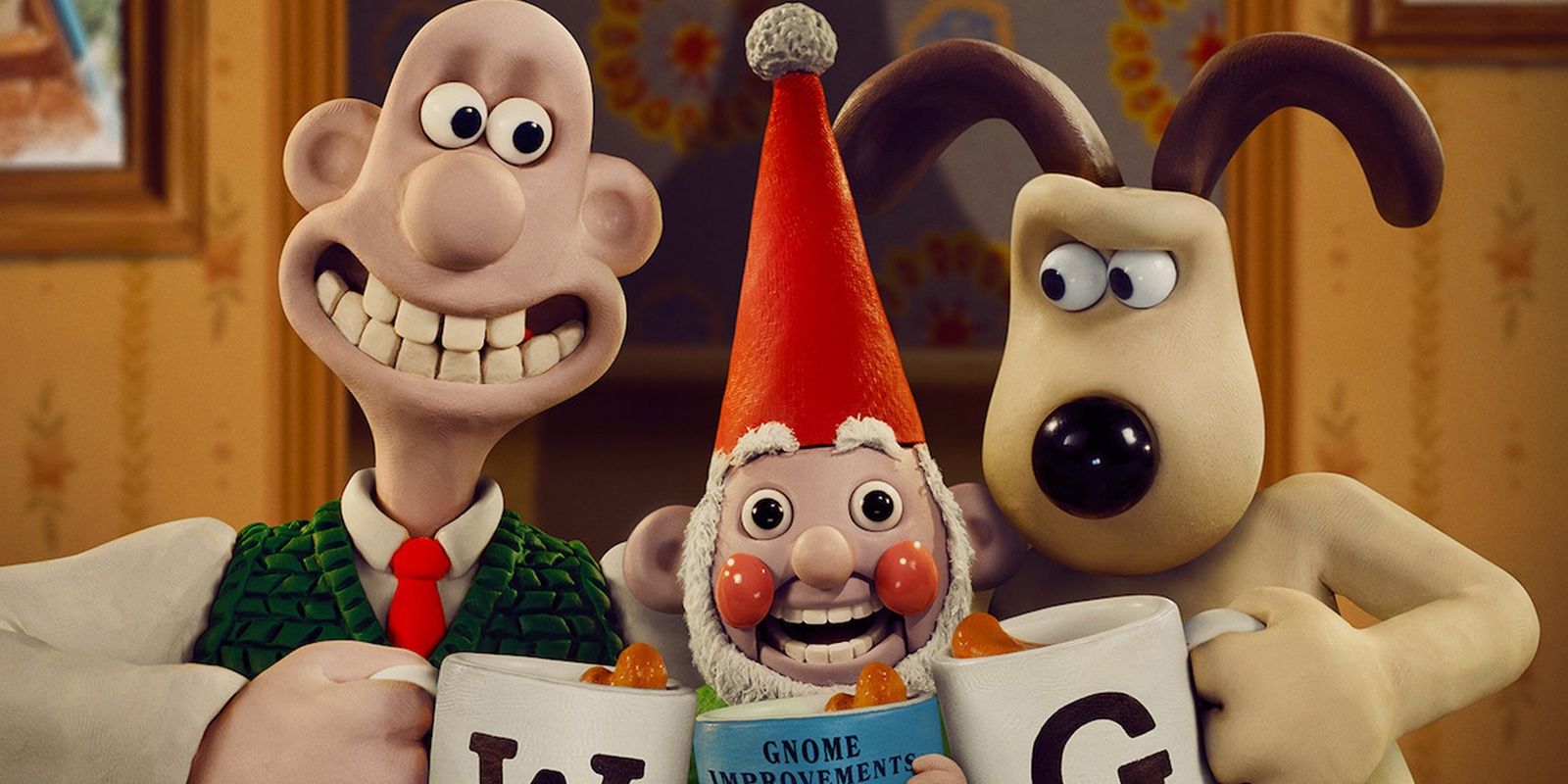
Related
New Wallace & Gromit Movie Lands Perfect Rotten Tomatoes Score
‘Wallace & Gromit: Vengeance Most Fowl’ has secured a perfect Rotten Tomatoes score and it’s not even out yet.
Modern technology has allowed the team to use 3D printing to help them with their production, something the original Wallace & Gromit projects could’ve only dreamed of. This helped with the Norbot character, who had a particularly complex armature. In total, the puppet department created 750 hands for the various Norbot puppets. They made 10 Norbot puppets with 20 interchangeable heads crafted, helping to show the newest invention’s evolution from good to evil. “We’ve made roughly about 180 new puppets for this film,” Harper confirmed, cementing the fact that stop-motion really is the most laborsome of the animation styles.
This includes “25-30 different variants of Wallace,” with a standard Wallace, scientist Wallace, a onesie Wallace, and even a “nudie Wallace” crafted. “I’ve had plenty of conversations about nudie Wallace,” Harper joked, allowing us an eye-opening insight into the true depths each puppeteer must go to make every possible variant of the characters come to life, even in their most private of states. As the audience surrogate for each tale, it won’t come as a surprise to learn that there are more models of Gromit than Wallace with over 30 made, even if the canine companion need not worry about constant costume changes.
What about the return of Feathers McGraw? Well, the animation team went through a staggering 50 pots of pins to find enough to craft the dastardly penguin’s eyes, searching for pins that were exactly 2.77mm in diameter for the 11 identical Feathers puppets. A total of 600 eyes were created for the various puppets in Vengeance Most Fowl, with this labor of love worth every second.
‘Vengeance Most Fowl’ Features a Blend of Old and New Techniques
Once the puppets are made and ready to shoot, filming can begin, with shooting on Vengeance Most Fowl led by Director of Photography, Dave Alex Riddett, who has worked at Aardman longer than the creator of Wallace and Gromit himself, Park. We met Riddett on one of Aardman’s many crafted sets, which featured stunning lighting and effects to make an underground basement seem like something from a thriller. Riddett noted, “It’s a cinematographer’s delight this film. It allows you to go on all sorts of areas, all sorts of genres.”
Once again, looking to keep the authentic style of the franchise alive, most of the sets in Vengeance Most Fowl are kept in-camera, with the set we were on having pre-programmed lighting, harking back to the days when there wasn’t the possibility of so many technically advanced post effects. “There was a certain charm and certain aesthetic that was born out of those days,” Riddett added, with that opinion and ethos carried through the entire Aardman team.
However, that doesn’t mean newer technology hasn’t been used while shooting, with a demonstration of the mind-boggling software used to create visual effects — from water and smoke — proving that this might just be the most aesthetically impressive Wallace and Gromit outing to date. Traditional techniques aren’t always at war with modern advancements, with the evolution of the LED lights used in stop-motion helping cinematographers light each set from within. Once each set is made, albeit with the one we saw taking “over a month to put together,” the benefit of this shooting style is that multiple cameras can capture the action, one frame at a time, for as long as is necessary. Because of this, stop-motion is considered to be closer to the live-action filming process due to the crafting of very real sets, something that comes across in the deep connection audiences find with stop-motion characters.
‘Vengeance Most Fowl’ Wouldn’t be Possible Without an “Animation Bible”
Our tour then swiftly continued as we met lead animator Carmen Bromfield Mason, who helped bring the previous two chats together as she discussed how animators blend physical puppetry with cinematography to make the stories we know and love. Several lead animators worked on the production, with each assigned their own character for whom they were responsible. Mason’s was Patel’s PC Mukherjee, with any other animator who is required to work with a Mukherjee model reporting to Mason for instructions. All information needed comes from, as Mason calls it, “the animation Bible,” which consists of every piece of possible information needed for each of the many characters. Most of the 30 animators working on the production have the chance to animate almost all the characters at least once, and, with continuity pivotal, the animation Bible helps keep consistency across the board.
After a look at the animation Bible and an example shown using one of the movie’s simplest designs, Feathers McGraw, it became quickly apparent just how much nuance goes into animating each frame of Vengeance Most Fowl. “There’s a lot that could go wrong,” Mason quipped, with the length of Feathers’ arms, the exact placement of the seams, and many other minutiae kept exactly identical across the fifteen-month shoot. In fact, a lot of these details have been kept identical for over 30 years, with many of the intricate features of Feathers McGraw from his first appearance in The Wrong Trousers needing to stay the same to make it feel like not much time has passed narratively. Excitingly, Feathers comes with his own seal in the movie too, a character we saw in the aforementioned animation Bible, with Mason playfully teasing that the seal “could probably get his own spinoff because everyone loves him so much.”
Feathers as a character, although simple in design, offers unique challenges, according to Mason. As a character with almost no features beyond beedy, soul-staring eyes, it’s difficult to find ways to convey emotion, as opposed to Wallace’s mouth and Gromit’s eyebrows. To try and keep the plasticine smooth and Feathers in perfect shape, cling film and a scalpel are used to soften edges, with lighter fluid used to craft a visually pleasing finish. Each animator carries around a toolbox ready with old-school stop-motion apparatus, although each animator “could probably fit in our hand the tools we use the most.”
As a gift, co-director Merlin Crossingham gave each of the animators their own hand-whittled tools “from twigs in the back of his garden”; a touch of class that feels tonally appropriate for Wallace & Gromit. A lack of options to craft emotion was the opposite of Mason’s troubles when animating her character PC Mukherjee, with the time taken to work out exactly how her head might work, figuring out whether she has more of a brow or forehead, and deciding how her policing hat sits atop her head. When it comes to hands, Mukherjee was kept in the mold of the classic Wallace & Gromit style, with characters keeping their hands quite high and never hanging their arms low as traditionally a person might do.
Animators are, like many of the puppets, not all made the same, with Mason letting us know that a big problem she faces as an animator is having shallow fingerprints. Making fingerprint indents in the puppets is a conscious move by the animation team to yet again try and craft visual authenticity that feels akin to the very first Wallace & Gromit productions. “I really wish I had deeper fingerprints,” Mason joked, although there was certainly truth behind it, with there seemingly been competition between animators as to who has the best fingerprints. Jestful competition aside, the 30 animators who worked on Vengeance Most Fowl, as with all Aardman projects, dedicated an enormous amount of time to get each word, glance, and movement perfect.
‘Vengeance Most Fowl’ is Stuffed Full of Easter Eggs
It isn’t just the animation team that must perfectly craft each aspect of their scenes, with production design working overtime to deliver an Easter-egg-filled extravaganza. This was apparent thanks to our next chat with production designer Matt Perry, who introduced us to one of the most ambitious designs of the whole project in Feathers McGraw’s submarine built in the basement set we visited previously. As Perry puts it, everything that can be seen on Feathers’ submarine has been “nicked from all the gardens around town,” and is packed full of tiny details that will demand several rewatches of Vengeance Most Fowl. This submarine acts as Feathers’ base for all his evil scheming, with his masterminding accompanied by a haunting tune on his frankly enormous organ. The creation of the model had to begin with Perry making a mock-up of the submarine, with his early design quickly getting the go-ahead from those in charge to allow enough time for the model to be built.
“There’s a huge amount of work that’s gone into that,” Perry confirmed, adding that the making of the submarine took “2-3 months,” with painting and even simply acquiring the correct materials for each minute detail took even longer still. With a schedule this tight, it’s important to try and find intelligent ways of cutting corners, with Perry admitting that, “When you look back in the submarine, nearly all the stuff that you can see inside has been made from the odds and sods of collections from old Wallace & Gromit, old Shaun the Sheep, things like that.” According to Perry, the submarine is a massive nod to Jules Verne’s iconic sci-fi adventure novel, Twenty Thousand Leagues Under the Sea, with that just one of many pieces of pop culture paid homage to by the production design team.
Vengeance Most Fowl, like many other Aardman creations, is brimming with Easter Eggs ready and waiting for eagle-eyed viewers to spot. For example, the sign on the Yorkshire/Lancashire border, “No Parkin,” is a deliberate reference to the ginger-flavored Yorkshire delicacy the Parkin Cake; In the film, the Norbots use “Snoozy Choc” to send Wallace to sleep, a product first referenced way back on an advertising board in The Wrong Trousers; The eyes used on Dawn of the Nugget’s Ginger are reused on Vengeance Most Fowl’s Kitten and a scene in which the Norbot’s slip on banana skins is adorned by a sign for a “Banana Warehouse” — a deliberate nod to Aardman’s Gas Ferry Road headquarters in Bristol’s docks, which was originally a banana warehouse.
While watching, Perry encouraged us to look out for a rubber duck that follows the submarine across the film, with its placement on top of the vessel meaning its little orange beak is the first to creepily rise out of the water. Of course, Perry himself couldn’t help getting in on the act, so he served as the model for the scientist who appears on the front cover of Wallace’s “Practical Inventor” magazine. There’s always plenty to try and spot in Aardman projects, with Vengeance Most Fowl feeling like the most Easter Egg-packed yet. In fact, during our lunch break, an animator entered the room and let us know that another Easter Egg had just been put in at the last minute; there’s clearly never a dull day on the Aardman animation team.
Feathers McGraw’s Return Came as a “Lightning Strike” of Inspiration For Nick Park and Merlin Crossingham
After an incredible tour, it was time to sit down with four-time Academy Award winner Nick Park, the creator of Wallace & Gromit, and his claymation co-conspirator on Vengeance Most Fowl, director Merlin Crossingham, who was once a runner on A Close Shave. It’s been 16 years since Wallace and Gromit starred in A Matter of Loaf or Death, and almost two decades since the Oscar-winning Curse of the Were-Rabbit, with many wondering what took Park and his team so long to bring the iconic duo back, and, perhaps more importantly, why now? “These ideas take time to develop,” Park answered, “and I guess this one was knocking around since Curse of the Were-Rabbit.” For a project as time and budget-sensitive as anything made at Aardman, it’s important to make sure there is enough of a will for the latest idea. “You wait for an idea to be the kind of thing that grabs you by the scruff of the neck and demands to be made,” Park added, with Crossingham reminding us that the studio had been busy in the meantime with lots of other projects.
But what was it specifically about Vengeance Most Fowl that sparked that “demand” that Park noted, “The idea of gnomes has always been in the Wallace & Gromit world,” adding, “and then [we] realized we needed a bit more kind of darkness in the story.” Step up Feathers McGraw, who came to Park like a “lightning strike” of inspiration. For so long, Feathers has been considered one of animation’s best villains; so simplistic yet utterly and terrifyingly effective and, surprisingly, tonally inspired by watching Alfred Hitchcock’s classic, Rebecca.
It’s been over three decades since Feathers first and last appeared, and the reaction to his return from fans only solidified the sentiment that he’s one of Park’s best inventions. “One of the most common questions we’ve had up until now is ‘When is Feathers going to return?'” Park noted, further emphasizing the endless love-to-hate from the millions of McGraw supporters. “The story demanded it,” Crossingham added that Feathers’ return “wasn’t pre-meditated.” It seems as if, without the story’s demands, Feathers might not have ever returned. “Personally I’ve never been into bringing characters back,” Park said, “it was just more of just an opportunity really.”
The ‘Vengeance Most Fowl’ Voice Cast is Certainly Impressive
It would be impossible to speak to Park and Crossingham and not discuss Whitehead, whose first feature-length vocal performance as Wallace consisted of 22.5 hours of takes, with the line, “I was grabbed by the Norbots!… Very unpleasant experience!” requiring 44 different variations in the studio. “He’s absolutely amazing,” Crossingham gushed, as the pair spoke about just how impressive working with Whitehead has been over the years. “He effectively understudied Peter back to Were-Rabbit, so for us, it’s been a gentle handing over of the baton.” Whitehead has worked on a variety of Wallace & Gromit projects over the years from video games to commercials, but, as Park joked, “he often did those jobs Peter didn’t want to do.”
We were lucky enough to hear some of the brilliant Reece Shearsmith’s vocal performance as the brand-new Norbot, with Park admitting that the pair had just finished recording for three hours via Zoom the day before our chat. Shearsmith wasn’t chosen for his fame — although Park admits it helps — but was chosen for his ability, with Crossingham adding, “he had a fascinating mix in the voice he came up with. We worked with him to develop the voice once we’d cast him and it’s a balance between innocence with an edge of darkness,” a combination that will come as no surprise to fans of Shearsmith’s Inside No. 9. Moving on to the return of Peter Kay in his role of Mack, Crossingham noted, “In Were-Rabbit Mack just shouted a lot, there wasn’t much sort of shape to his character so we’ve really had to expand Mack so that he has much more shape in terms of what he does and says. Peter really worked with us to find what that needed to be.”
So, what for the future of everyone’s favorite stop-motion inventor and his canine companion? “There are always more Wallace & Gromit ideas,” Park mentioned with a wry smile, with Crossingham adding, “Watch this space, but, not immediately, give us a minute.” Aardman moved straight on with their next batch of Shaun the Sheep filming as soon as Vengeance Most Fowl was complete, with new ideas for the production company born all the time. “We are developing other IP all the time. Keeping the slate going,” Park said, so perhaps a brand-new Aardman idea altogether is on the horizon. With a cast this strong, an Aardman team at the very top of their game, and animation that is both rooted in tradition and enhanced by modern technological advancements, it’s no wonder Vengeance Most Fowl looks to beWallace and Gromit’s most cracking adventure yet.
Wallace and Gromit: Vengeance Most Fowl debuts on Netflix on January 3, 2025.
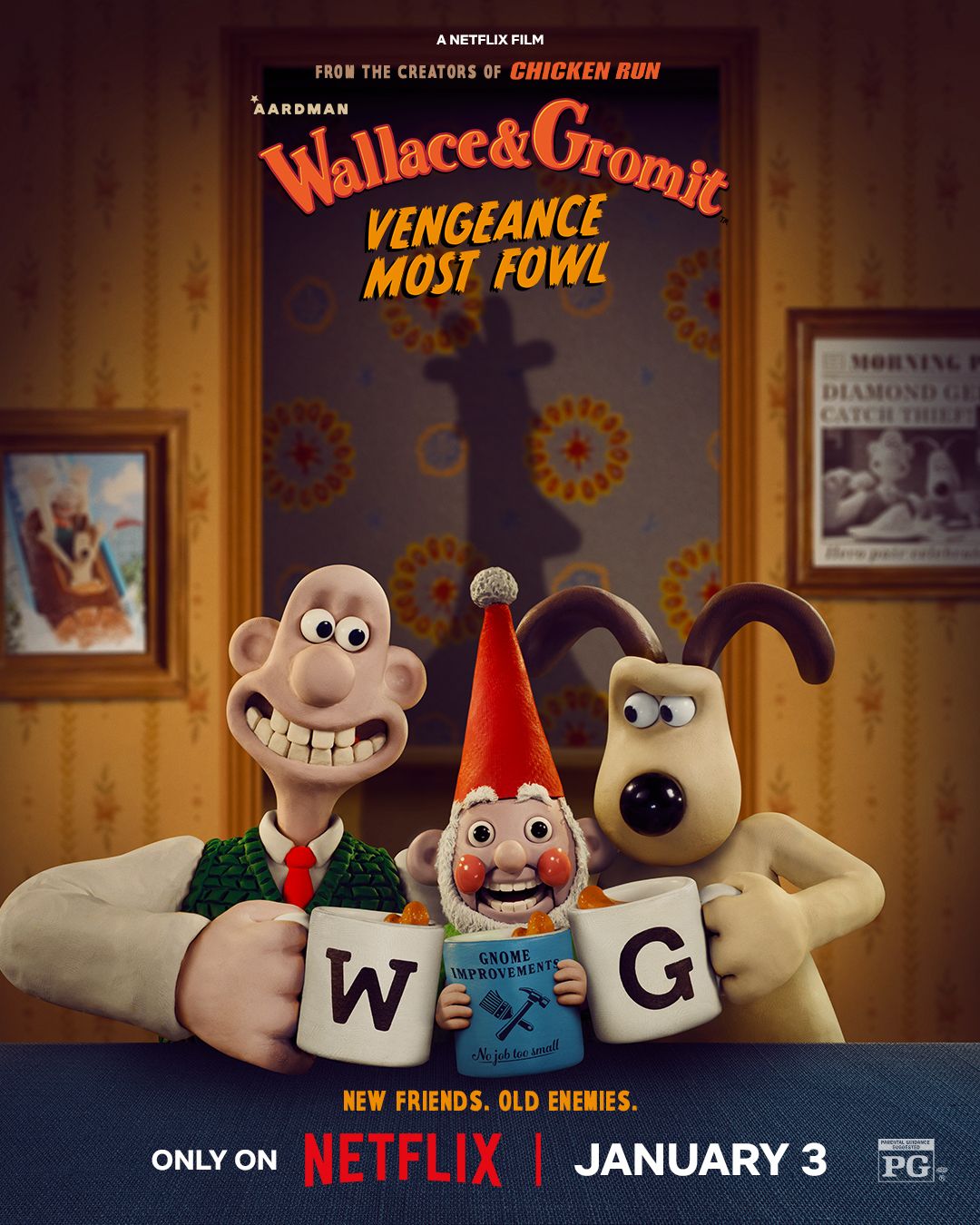
Wallace & Gromit: Vengeance Most Fowl
- Release Date
- October 27, 2024
- Director
- Merlin Crossingham , Nick Park
- Cast
- Ben Whitehead , Garth Jennings , Reece Shearsmith , Peter Kay , Maya Sondhi , Diane Morgan , Lenny Henry , Adjoa Andoh , Muzz Khan , Lauren Patel
- Writers
- Mark Burton , Nick Park
[ad_2]
Source link

